The Swim of a Lifetime
First person with a stoma to swim the English Channel
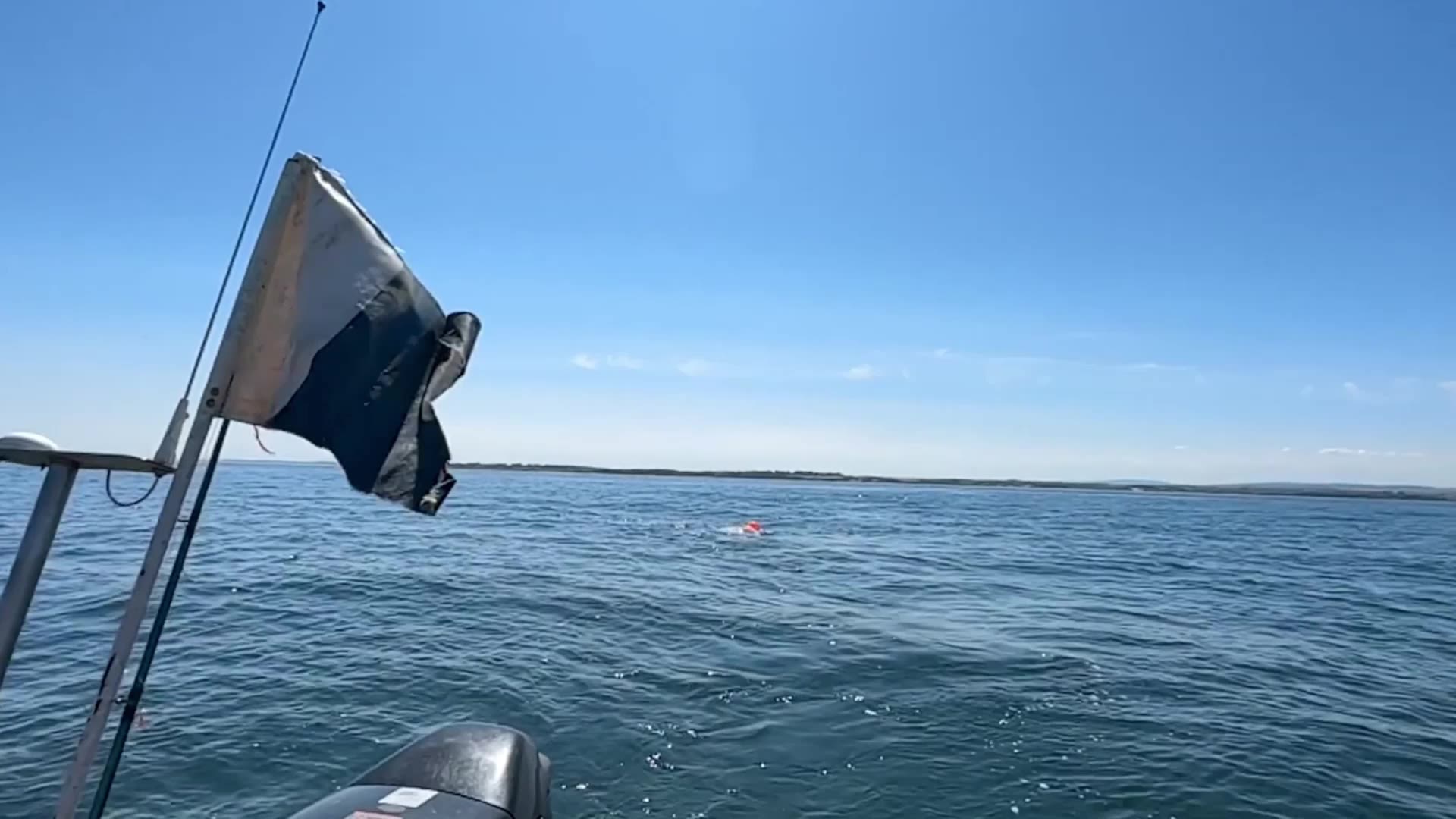

Dansac Customer Gill Castle Makes History
Swimming solo across the English Channel
In 2011, Gill Castle was serving as a police officer in the UK and was pregnant with her first child. In October that year – six weeks before her due date – Gill’s new baby was born prematurely. He weighed just 4 pounds 7 ounces and Gill experienced traumatic childbirth complications that led to a permanent colostomy.
“At what should have been the happiest time of my life, I ended up in a reality that was very different from my dream,” Gill said. “My son was born prematurely; my husband was working offshore as a deep-sea diver, and all my friends and family were more than 150 miles away. I was on my own, in pain, and really struggling to cope.”
Over the next three years, Gill was diagnosed with Post-Traumatic Stress Disorder (PTSD), developed sepsis and had numerous surgical procedures, took early retirement from her career as a police officer, and struggled to find ostomy products that did not leak and that would allow her to manage her stoma and maintain healthy peristomal skin.
“During those early months after my colostomy surgery,” Gill says, “I tried different types of stoma products. Not only did they leak, but I also had reactions to the barrier adhesives and my skin became increasingly red and sore. That small patch of reddened skin around my stoma had a huge impact on my ability to live a normal, active life and I began to limit my activities. I stopped going out for meals and visiting with friends, and I even avoided holding my child. Thankfully, I eventually discovered the Dansac NovaLife TRE™ ostomy products. Those products were lifesaving!”
With her stoma management finally getting under control, Gill began her journey back to health by simply walking for fitness. She also joined an indoor cycling group and began swimming regularly. A friend introduced her to triathlons and she even completed a half Ironman – raising money for the Birth Trauma Association in the UK. Gill has since been scuba diving, skydiving, and mountain climbing. Eventually, she began open-water swimming in the frigid waters of the North Sea, close to her home in Northeast England. “I thought, well, maybe you can do these things after all – so just go out and do them before you get hit by a bus! You’ve got one life, so let’s live it!”
From that moment on, Gill has focused on being active and facing her fears – including her deep-seated fear of the sea and of open water – and challenging herself to see what is possible with a stoma.
It was two and a half years ago that Gill began training and working toward what seemed initially like an impossible, super-human goal – being the first person with a stoma to swim the English Channel alone.
“It was all completely mad. Completely mad!”
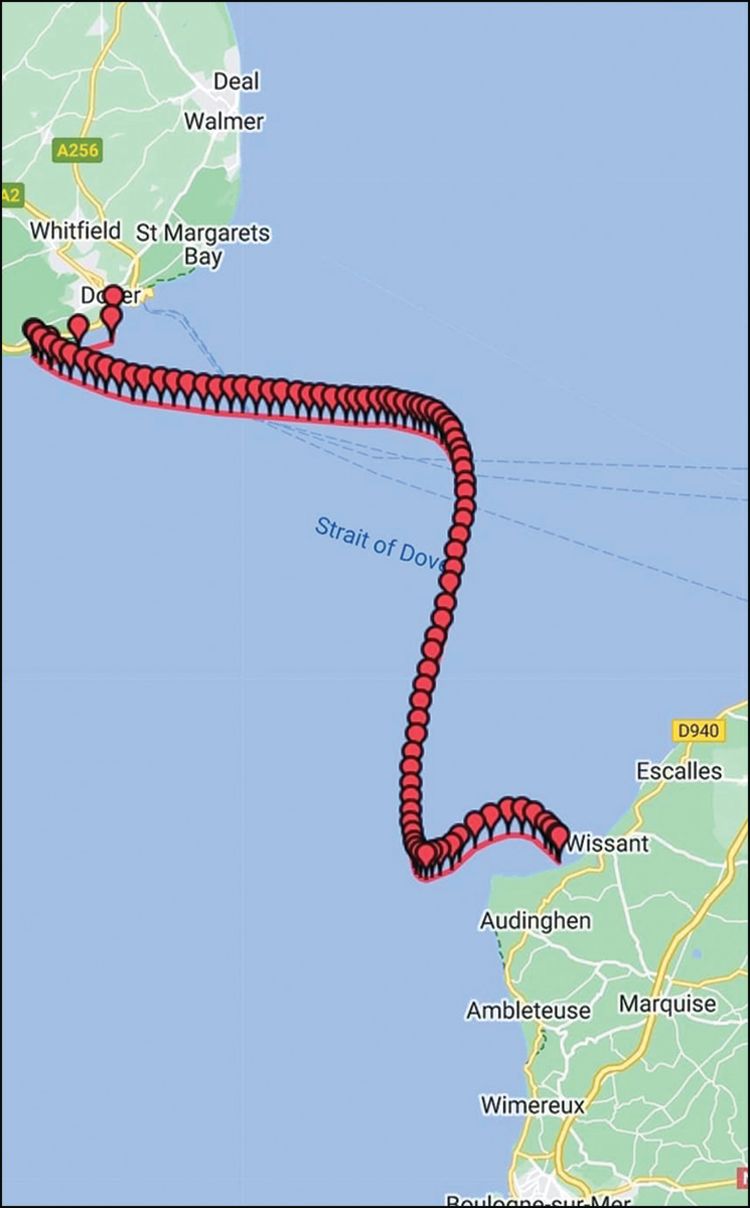
Gill swam the 21 miles from England to France in 13 hours 53 minutes
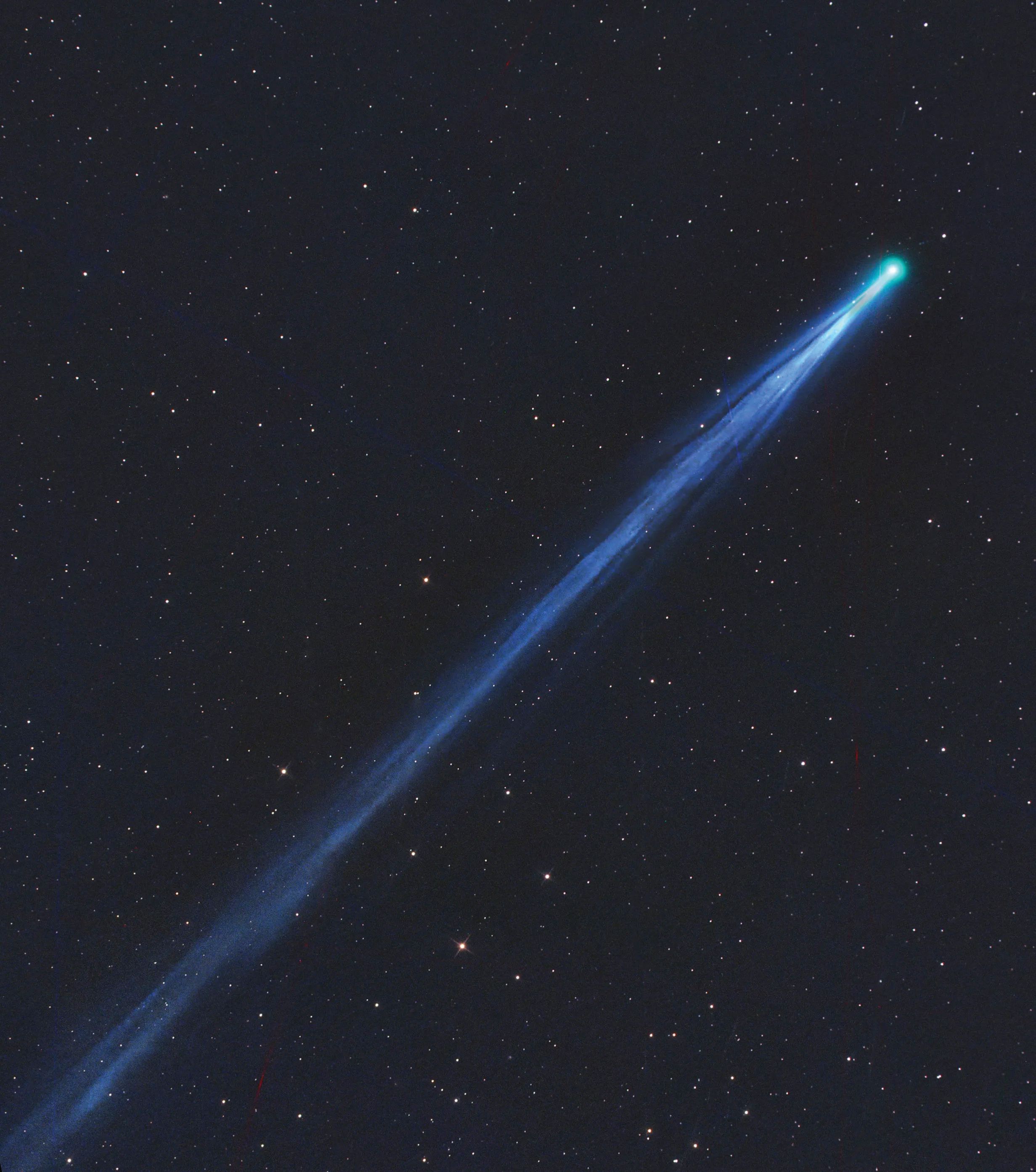
Like a silent sentinel lighting the way, the Nishimura Comet came closest to the earth that night, on its 435-year orbit around the sun.
The Swim – crossing the Channel from England to France
Late at night on September 11, 2023, Gill Castle and her supportive crew of friends left Dover harbor on the southern coast of England en route to the official starting point for Gill’s Channel crossing—the rocky beach at Samphire Hoe, just south of Dover.
“My fabulous crew slathered me with a combination of sun block and Vaseline, to help prevent chafing, and I perched on the boat’s wooden bench, feeling adrenaline surging through my body. I was shaking, but I felt focused and determined. I had never felt so ‘in the moment’ in all my life, and I felt it truly was my moment – my moment to get into the sea and make history.
“I clambered over the side of the boat and into the dark water. All the shaking, the adrenaline surge, and nerves completely disappeared. It was like magic. I swam to the beach and I knew this was the place I was meant to be. It honestly felt like destiny as I stood on that beach and looked out toward my boat – the Sea Leopard – all lit up. At that moment, I had absolutely no doubt that I would make it to France.
“‘Leave your doubts on the beach’ is the Channel crossing mantra. I had certainly had doubts during my training and I had shed lots of tears at various moments. I had experienced intense anxiety about my stoma bag and about swimming in the dark, even questioning whether I would have the physical and mental endurance to finish such an epic challenge. But at that moment, I had no doubt whatsoever.
“I didn’t know how long it would take for me to swim across the Channel, but I guessed it would take
between 15 and 18 hours. I didn’t know what the currents would be like, what the water would be like, or how any of it would feel. The only thing I asked my crew was to tell me when I was finally in French waters.
“From the Sea Leopard, a huge spotlight was shining on me throughout the swim, and between my fingers I could see bubbles in the foreboding shadows below me as I pulled back with each stroke. The dark shadows and unfamiliar shapes passing in the gloom below were initially unsettling. I wondered if some beast from the sea was emerging from the depths, but I brushed those thoughts aside. I knew that fear was a waste of emotion and energy and I simply would not permit myself the luxury of being afraid.
“I had been told that swimming at night was magical, that you got to see shooting stars, the moon, and even phosphorescence below – but I didn’t see any of that. I was swimming at a good pace, steady, and breathing regularly, and I could only glance periodically at the stars.
“Massive container ships and freighters made their way past me in the distance and I swam on; then slowly, the never-ending night began to lift. I had been swimming for 8 or 9 hours when the dawn finally came. In the daylight, I thought of everything that was now behind me – all the training, the tears, the stress, the stoma anxiety, the night terrors, the frantic juggle of training and working and parenting.
“I thought of people struggling to adapt to stoma surgery and the women in Kenya without proper stoma supplies, and I thought about the scores of traumatized women who I knew were struggling after their own traumatic childbirths. I felt connected to them all as I swam toward France. ‘Just keep going,’ I thought. ‘If you stop, you won’t get there.’ It was as simple as that. On I went, but still hours to go.
“The next thing I was aware of was sand below me on the bottom of the sea; then ripples in the sand; then a piece of seaweed floating and bobbing along the bottom. All I had been able to see for more than 13 hours was the dark, gloomy depth of the sea. Now I could see sand along the shoreline of France!
“I felt the tears coming, then a sob erupted from my throat; but I pushed the emotions away. ‘You’re not there yet,’ I told myself.
“My left shoulder was in agony. There were lots of jellyfish, and I did get a few stings, but I swept the
jellyfish away like crumbs off a table. Finally, I put my feet down and felt sand between my toes! I started running toward the shore, my arms raised over my head until I finally collapsed on the beach, sobbing. I was safe. I had done it.” ′
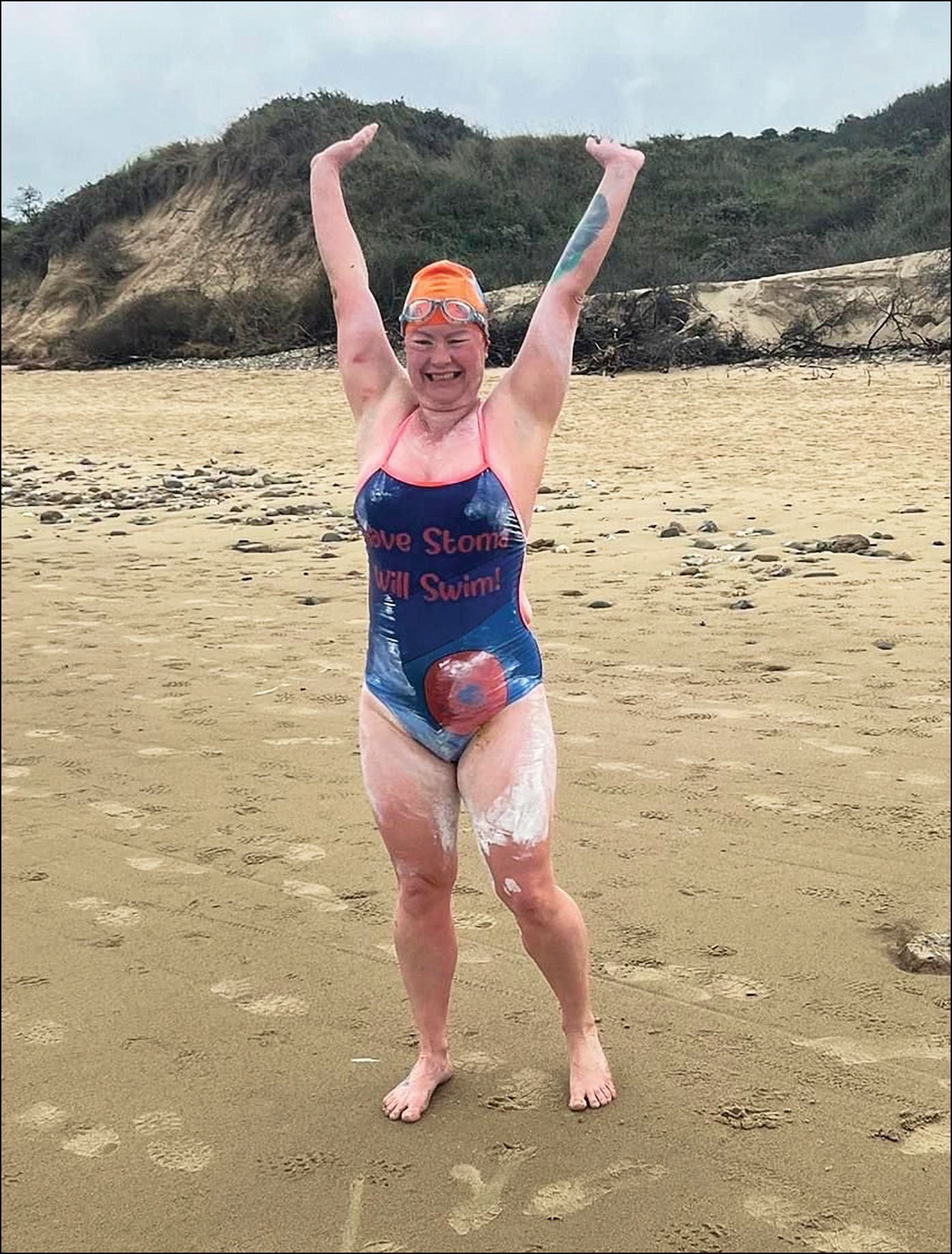
On the beach in France – making history and celebrating life!
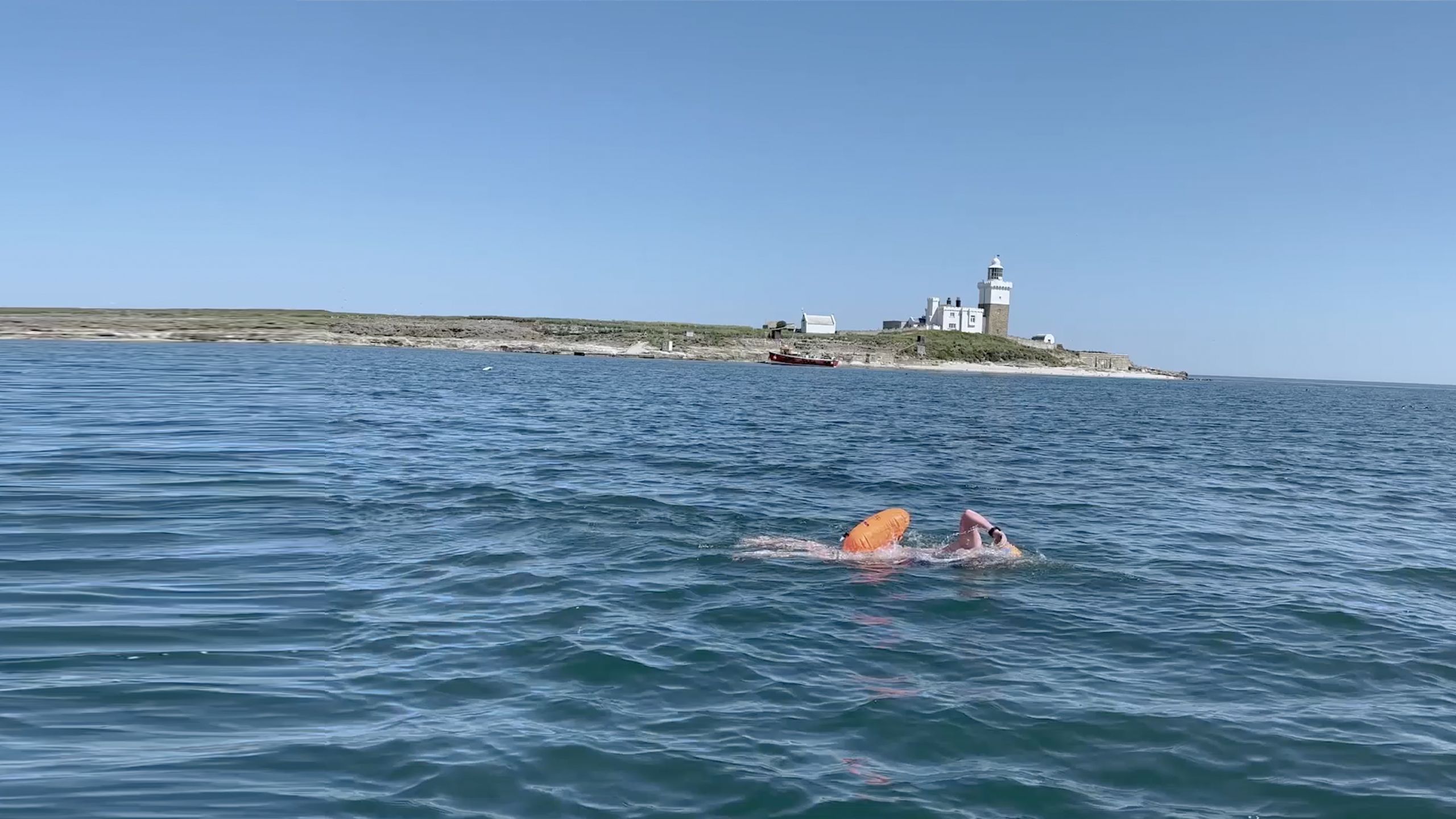


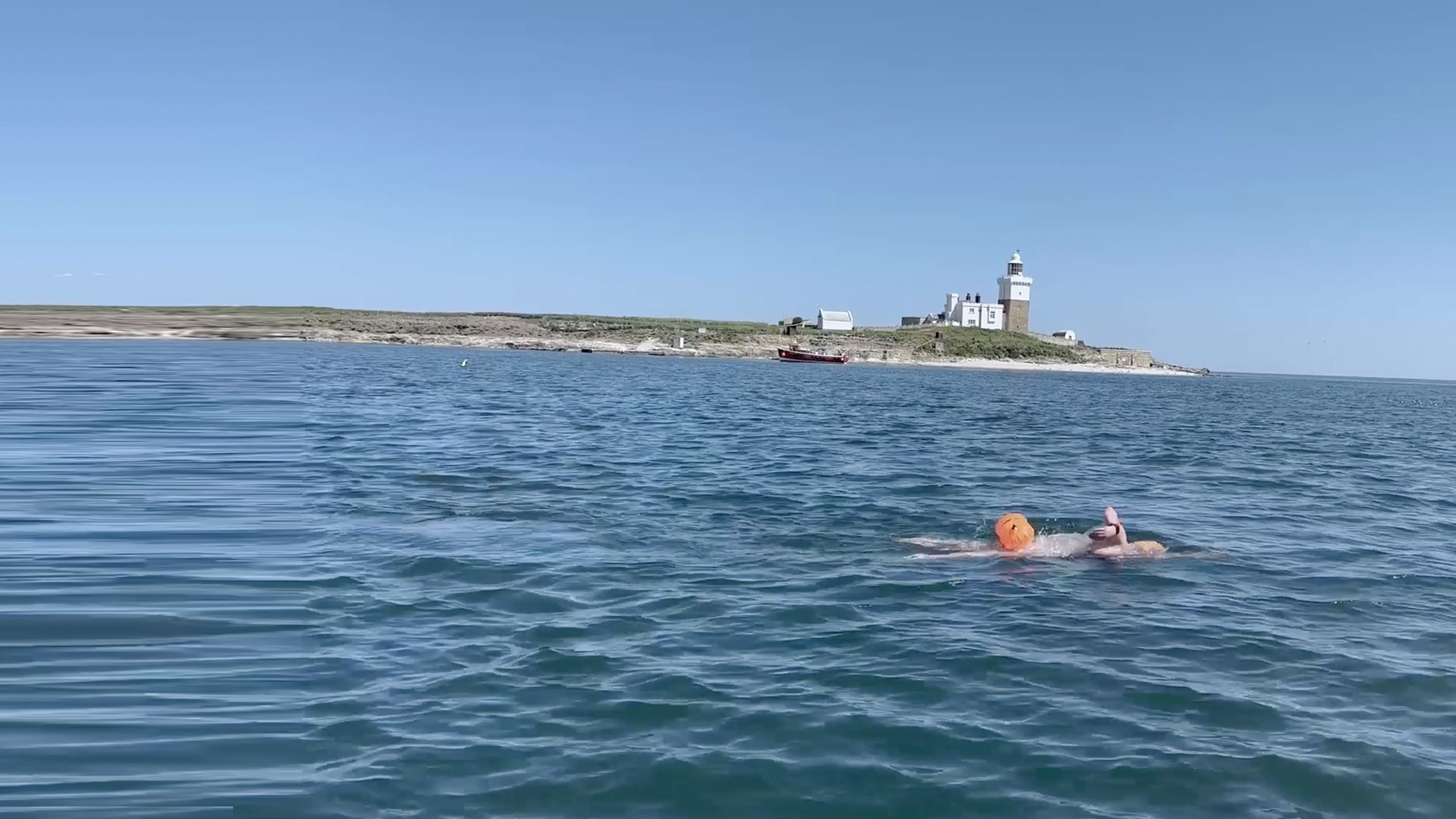
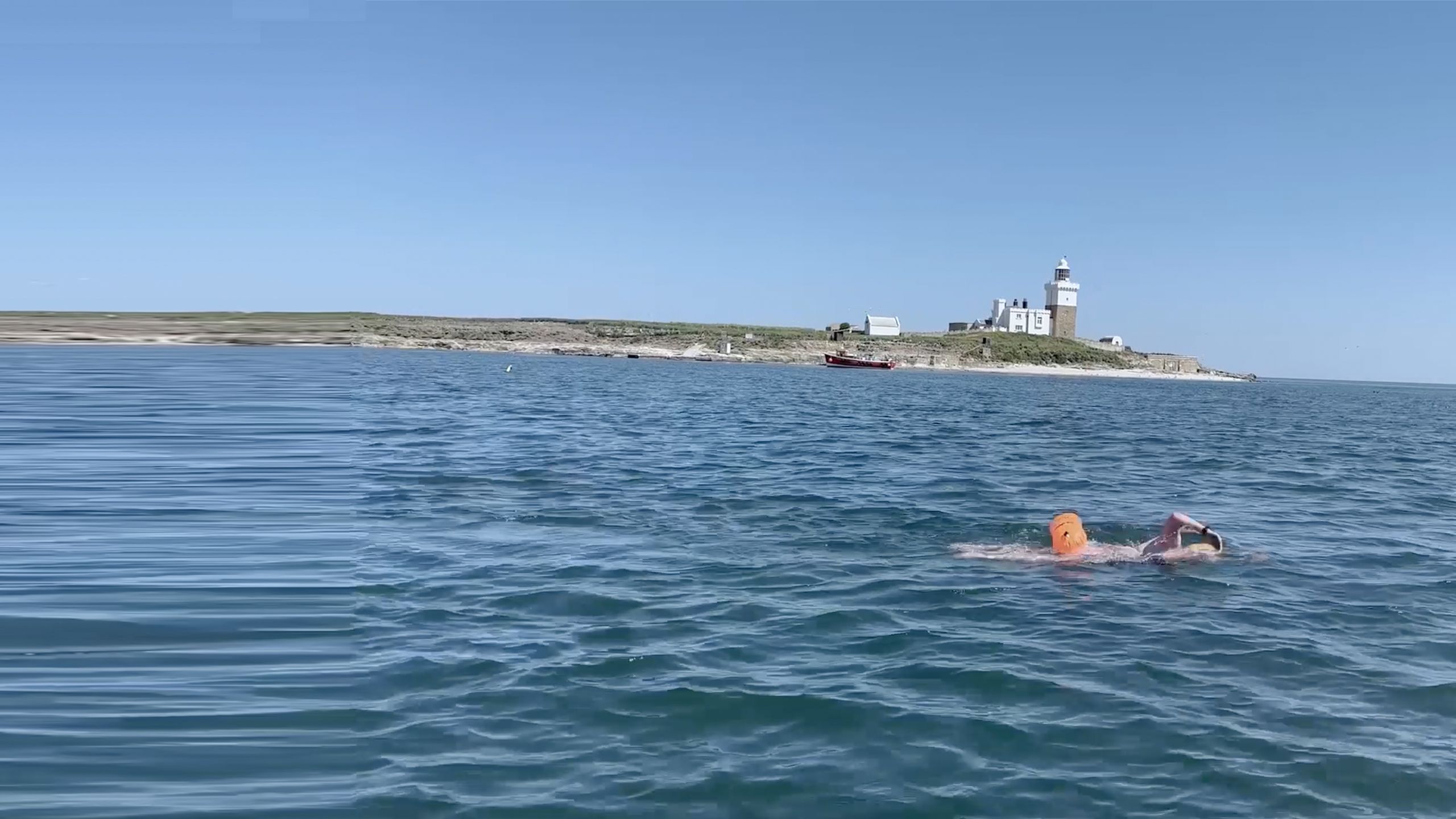

©2023 The Firm of John Dickinson Schneider, Inc.
